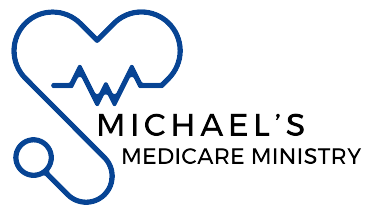When you’re nearing age 65 or helping a loved one prepare for Medicare, one of the first decisions you’ll encounter is understanding the difference between Medicare Part A and Part B. Though both are part of Original Medicare, they serve very different purposes—and understanding those differences is critical to making informed healthcare decisions.
If you live in Beaverton, OR, or anywhere in Oregon, knowing how these parts work can help you avoid coverage gaps and make your enrollment process smoother.

📍 Location Information
If you’re seeking Medicare-related guidance locally, help is available at:
15125 SW Ruby Court, Beaverton, OR
📞 Call: +1 (503) 828-2328
📧 Email: wmichaeljarman@gmail.com
What Is Medicare Part A?
Medicare Part A is often referred to as “hospital insurance.” It primarily covers inpatient care and services you receive in a hospital or skilled nursing facility. Here’s a breakdown of what it generally includes:
- Inpatient hospital stays
- Skilled nursing facility care (under specific conditions)
- Hospice care
- Limited home health care
Part A is typically premium-free if you or your spouse paid Medicare taxes for a certain number of years. However, that doesn’t mean there are no out-of-pocket costs. You may still face deductibles and coinsurance depending on your length of stay and services received.
Many individuals in Oregon are surprised to learn that hospital-related costs can add up quickly—even under Part A. That’s why having a clear understanding before you enroll matters.
What Is Medicare Part B?
Medicare Part B is often called “medical insurance.” It covers doctor visits, outpatient services, and preventive care. If you need ongoing treatment for a chronic condition or routine medical checkups, Part B usually comes into play.
Services generally covered by Part B include:
- Doctor’s office visits
- Lab work and diagnostic tests
- Durable medical equipment (like wheelchairs or walkers)
- Preventive services (such as screenings and vaccines)
- Mental health care (outpatient)
- Ambulance services
Unlike Part A, Medicare Part B usually requires a monthly premium. That premium can vary based on income and is often deducted from Social Security if you’re receiving benefits.
What’s the Key Difference Between Part A and Part B?
In simple terms:
- Part A = Hospital Care
- Part B = Outpatient Medical Care
Many people in Beaverton enroll in both Part A and Part B to ensure they have complete foundational coverage. However, there are situations where individuals delay Part B (especially if they’re still working and have employer-sponsored coverage).
It’s essential to know the rules, because delaying enrollment without proper coverage elsewhere could result in penalties. That’s why many residents turn to the best Medicare advisors in Beaverton, OR to make sure their timing is right.
How to Decide What You Need
Your choice between Part A and Part B—or both—depends on a few important factors:
- Are you still working?
If you have group health coverage through an employer, you might delay Part B without penalties. - Do you have other insurance?
Coordination with VA, Tricare, or union benefits may affect how and when you enroll. - Do you expect frequent doctor visits?
If outpatient care is a priority, having Part B becomes even more essential. - Are you planning to travel?
Original Medicare doesn’t typically cover you outside the U.S., so you may want additional coverage depending on your lifestyle.
Navigating these choices isn’t always easy. That’s why getting advice from someone who understands Oregon’s Medicare landscape can make a real difference.
Enrollment Timelines to Keep in Mind
Your Initial Enrollment Period (IEP) typically begins three months before the month you turn 65 and ends three months after. That’s a seven-month window.
If you miss this window and don’t qualify for a Special Enrollment Period (SEP) (like if you had employer coverage), you may face delays or penalties. These rules apply to both Part A and Part B and can be confusing if you’re managing other health plans or retirement timing.
Being informed ahead of time—and reviewing your options early—can prevent avoidable mistakes down the road.
Why Local Guidance Can Help
While Medicare is a federal program, local guidance can provide added value. For example, residents of Beaverton may encounter unique questions related to regional provider networks, supplemental plans, or how Medicare Advantage plans align with Oregon’s healthcare system.
That’s why many people prefer to speak with the best Medicare advisors in Beaverton, OR when making their enrollment decisions. They can help:
- Explain your options in plain language
- Assess how your needs fit with current plans
- Identify potential gaps in coverage
- Make sure your timing avoids penalties
The goal is not to rush into a plan, but to make the choice that fits your healthcare goals and budget.
📍 Location Information
If you’re seeking Medicare-related guidance locally, help is available at:
15125 SW Ruby Court, Beaverton, OR
📞 Call: +1 (503) 828-2328
📧 Email: wmichaeljarman@gmail.com
Frequently Asked Questions (FAQs)
1. Can I have Medicare Part A without enrolling in Part B?
Yes, it’s possible to enroll in Part A alone, especially if you’re still working and have employer coverage. However, make sure your situation qualifies to avoid late penalties when you eventually enroll in Part B.
2. What services are not covered by Part A or Part B?
Original Medicare (Part A and B) does not cover vision, dental, hearing aids, or long-term custodial care. Many people explore Medicare Advantage or Supplement plans to fill these gaps.
3. When should I start planning for Medicare enrollment?
Ideally, begin researching your options about six months before you turn 65. This gives you time to understand your coverage needs, avoid penalties, and make a confident choice.




